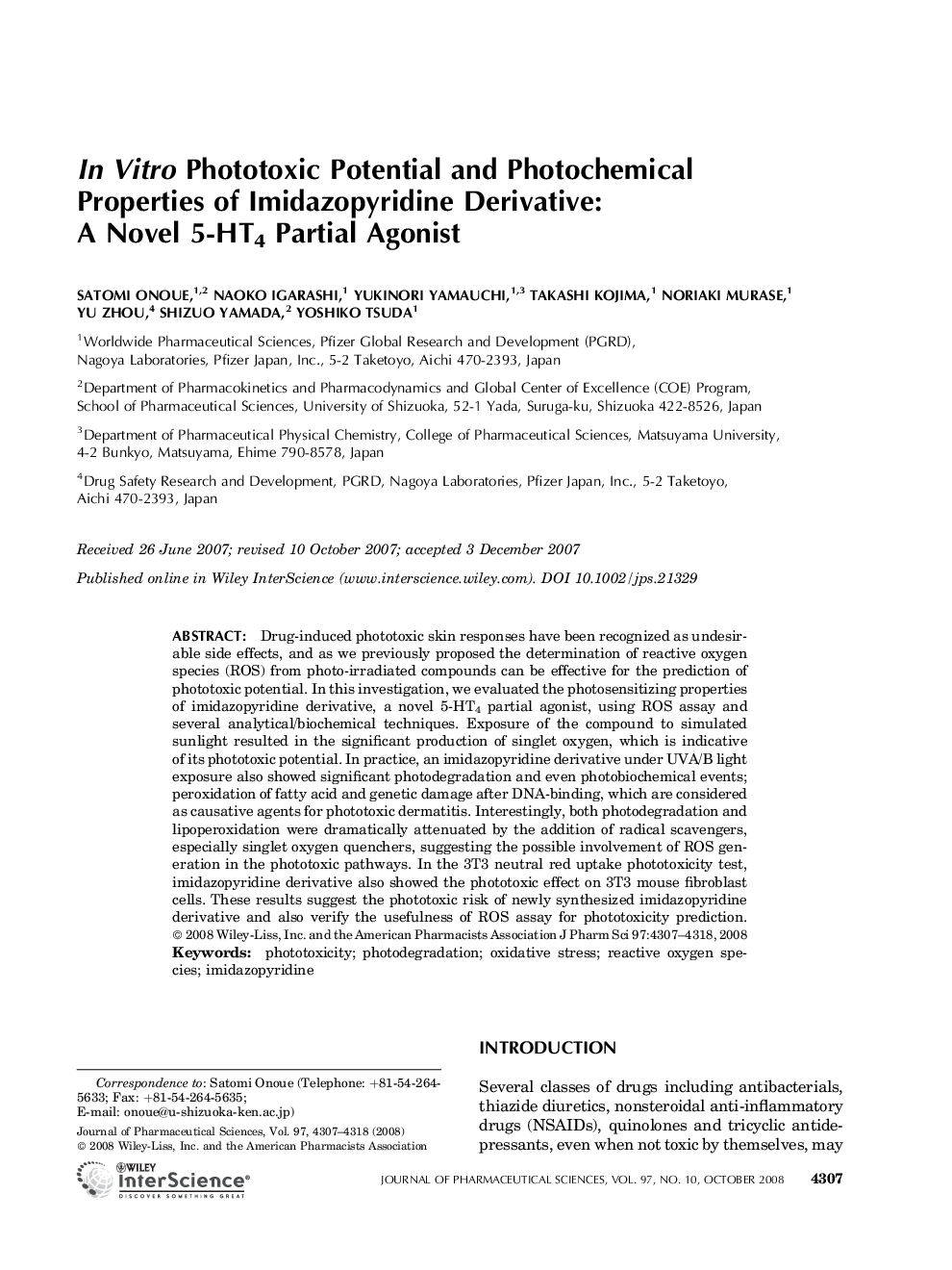| Article ID | Journal | Published Year | Pages | File Type |
|---|---|---|---|---|
| 2485331 | Journal of Pharmaceutical Sciences | 2008 | 12 Pages |
Abstract
Drug-induced phototoxic skin responses have been recognized as undesirable side effects, and as we previously proposed the determination of reactive oxygen species (ROS) from photo-irradiated compounds can be effective for the prediction of phototoxic potential. In this investigation, we evaluated the photosensitizing properties of imidazopyridine derivative, a novel 5-HT4 partial agonist, using ROS assay and several analytical/biochemical techniques. Exposure of the compound to simulated sunlight resulted in the significant production of singlet oxygen, which is indicative of its phototoxic potential. In practice, an imidazopyridine derivative under UVA/B light exposure also showed significant photodegradation and even photobiochemical events; peroxidation of fatty acid and genetic damage after DNA-binding, which are considered as causative agents for phototoxic dermatitis. Interestingly, both photodegradation and lipoperoxidation were dramatically attenuated by the addition of radical scavengers, especially singlet oxygen quenchers, suggesting the possible involvement of ROS generation in the phototoxic pathways. In the 3T3 neutral red uptake phototoxicity test, imidazopyridine derivative also showed the phototoxic effect on 3T3 mouse fibroblast cells. These results suggest the phototoxic risk of newly synthesized imidazopyridine derivative and also verify the usefulness of ROS assay for phototoxicity prediction.
Related Topics
Health Sciences
Pharmacology, Toxicology and Pharmaceutical Science
Drug Discovery
Authors
Satomi Onoue, Naoko Igarashi, Yukinori Yamauchi, Takashi Kojima, Noriaki Murase, Yu Zhou, Shizuo Yamada, Yoshiko Tsuda,
